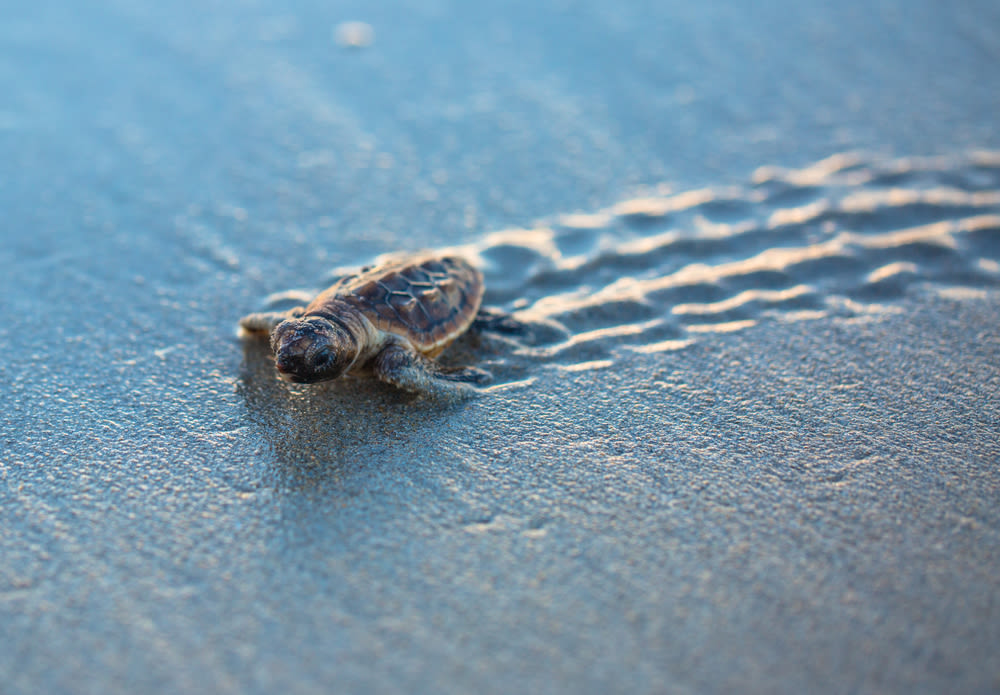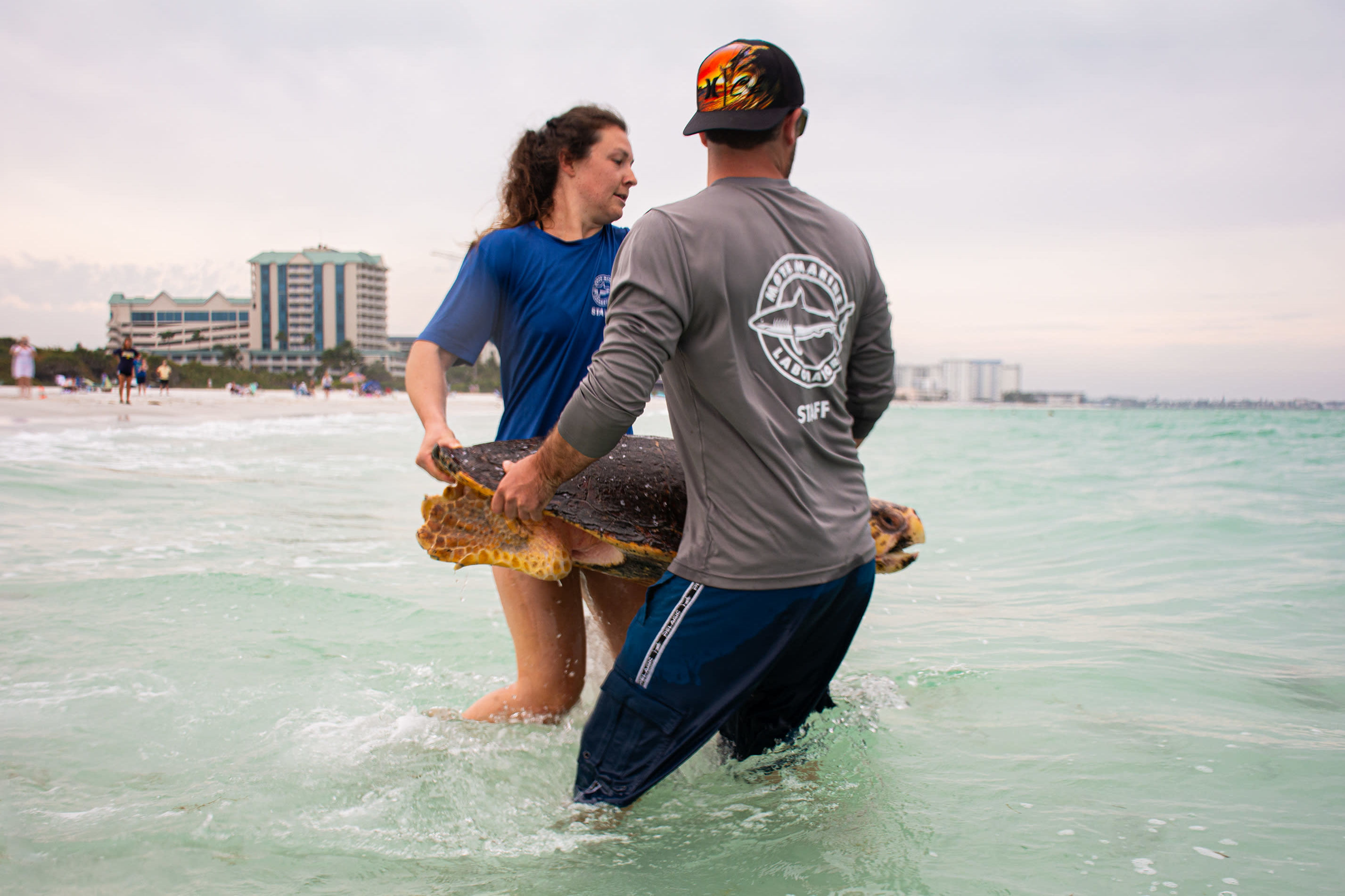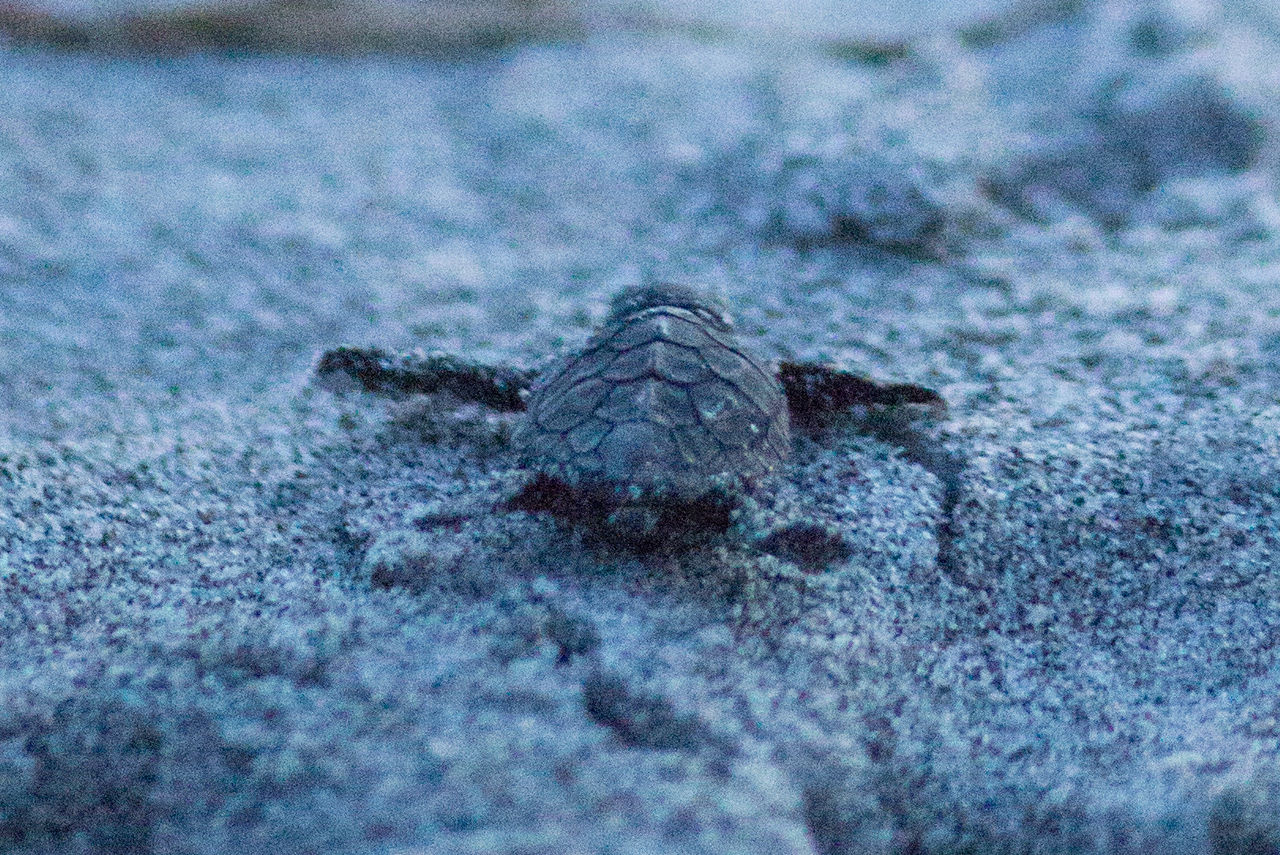It's Sea Turtle Nesting Season Again

A sea turtle hatchling makes its way to the ocean.
Image: Shutterstock
May 1 is the official start of the annual sea turtle nesting season in Southwest Florida, but for Mote Marine Laboratory’s sea turtle patrol, the season started today. Mote’s 275 volunteers began walking 35 miles of local public beaches, scanning for signs of female sea turtles plodding up the beach to lay their eggs.
The patrol is part of Mote’s Sea Turtle Conservation & Research Program. Mote trains volunteers to look for tracks, nests, signs of predators, washouts from storms and what are called “false crawls"—tracks that show a turtle turned around and went back into the Gulf. The data is then handed over to Mote biologists. Last year, Mote counted 5,112 nests.
Volunteers are valuable, says Stephannie Kettle, Mote’s public relations manager. “Our scientists can’t walk 35 miles of beaches every day,” she says.
Mote will also be looking at the impact of closed beaches on sea turtle behavior and nesting. People and their beach chairs can scare turtles away (a possible reason for a false crawl) or present obstacles. People also leave food, which attracts predators like coyotes and raccoons, which prey on hatchlings.
The Sea Turtle Patrol is a fun and fulfilling experience—especially this year, when most of us are banned from the beach. But if you’re thinking of volunteering, you’re out of luck. It’s a popular activity and all spots are taken. But you can still follow the progress of nesting season this year at Mote’s 2020 nesting page.
Even though the beaches are closed, they will eventually reopen, and when they do, Mote offers these tips to keep sea turtles safe:
On the beach: If you encounter a nesting turtle or hatchlings, remain quiet and observe from a distance. Shield or turn off outdoor lights that are visible on the beach from May through October. Close drapes after dark and put beach furniture far back from the water. Fill in holes that may entrap hatchlings on their way to the water.
On the water: Follow Coast Guard-approved safe boating guidelines and use vigilance to avoid striking sea turtles and other large marine life. Be sure to stow trash and line when under way. Marine debris that accidentally blows overboard or out of a truck can become ingested by or entangled around marine life. Wear polarized sunglasses to better see marine life in your path.
Do not: Approach nesting turtles or hatchlings, make noise, or shine lights at turtles. Use flashlights or fishing lamps on the beach. Encourage a turtle to move while nesting or pick up hatchlings that have emerged and are heading for the water. Use fireworks on the beach
If you see a sick, injured or stranded sea turtle in Sarasota or Manatee county waters, contact Mote Marine Laboratory’s Stranding Investigations Program at (941) 988-0212. Outside of Sarasota or Manatee counties, please call the Florida Fish and Wildlife Conservation Commission (FWC) at (888) 404-FWCC (3922).
If you suspect that someone is tampering with a sea turtle nest, harassing a sea turtle or has possession of a sea turtle or any of its parts, please call FWC or your local sheriff’s department. If you find sea turtle hatchlings that are not on the beach or are headed away from the ocean, call Mote’s Sea Turtle Conservation and Research Program for instructions at (941) 388-4331. Do not put hatchlings in water or take them into air conditioning. Hatchlings heading towards the ocean should be left alone. Sea turtles, sea turtle eggs and nesting marking materials are protected under federal law, and any harassment or interference with a sea turtle, living or dead, is subject to penalty.
Mote is not a regulatory agency. Go to the The Florida Fish and Wildlife Conservation Commission for each county's and municipality's sea turtle protection ordinances.



